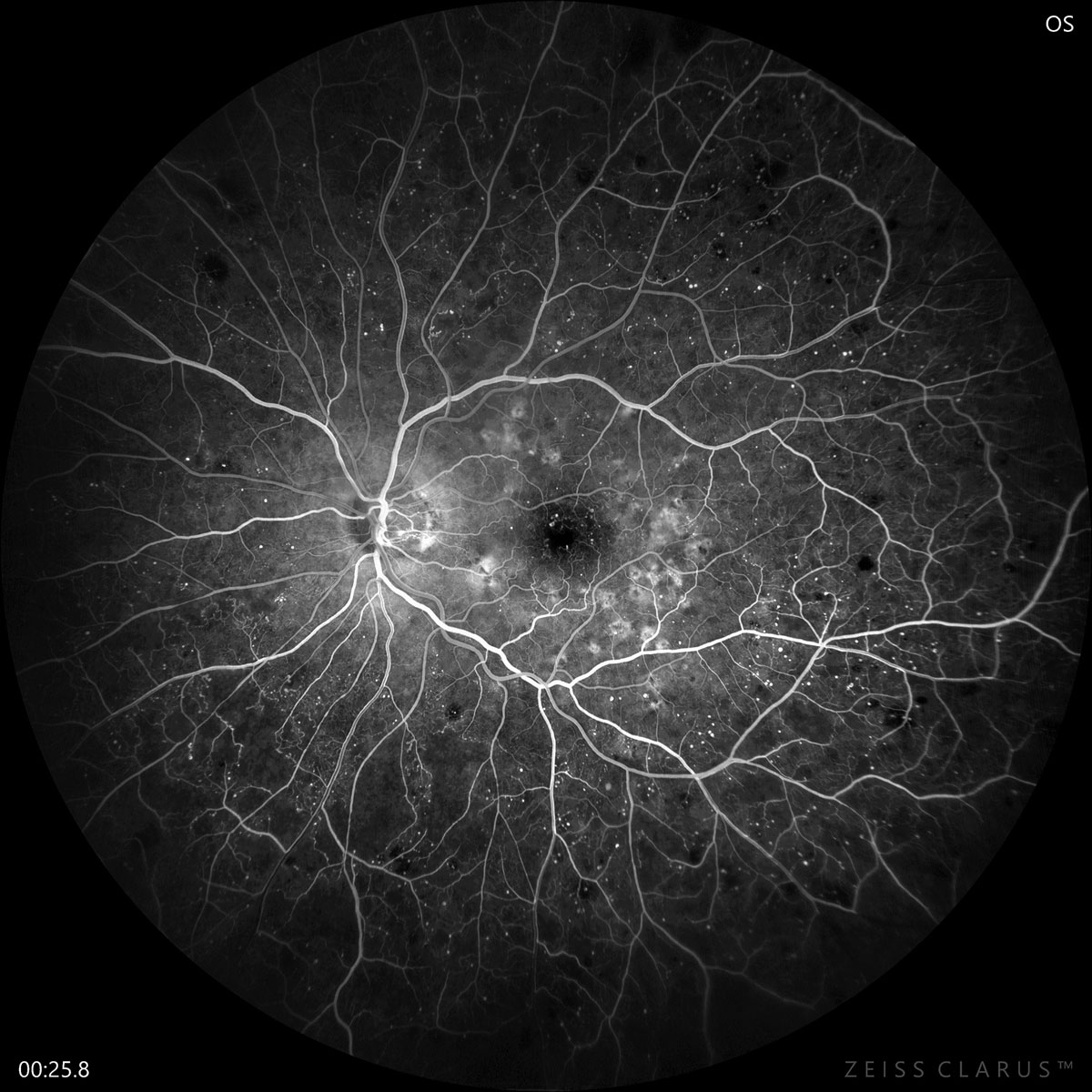 |
| Higher TSH and lower FT3 levels in euthyroid patients with DR may disturb the process of glucose and lipid metabolism, promoting the occurrence and development of DR. Photo: Jay Haynie, OD. |
In a new study, researchers investigated potential correlations of the thyroid-related hormones TSH, FT3 and FT4 with diabetic retinopathy (DR) development in euthyroid patients with type 2 diabetes and found that higher TSH and lower FT3 in subjects with normal thyroid function may affect glucose and lipid metabolism, increasing DR risk.
A total of 286 patients with diabetes were retrospectively analyzed. The patients were divided into DR and non-DR (NDR) groups. Researchers then analyzed the aforementioned thyroid function-related hormones, plus blood glucose indices (FBG and HbA1c) and blood lipid indices (HDL-C, LDL-C, TC and TG) to explore the risk factors for DR.
Out of all subjects, 35.3% developed DR and 64.7% did not. This study found that high serum TSH and low serum FT3 levels are independent risk factors for DR. TSH, a hormone secreted by the adenohypophysis, can regulate the proliferation of thyroid cells; it also promotes the synthesis and secretion of THs and improves blood supply to the thyroid. Abnormally high TSH expression can accelerate oxidative stress, induce vascular endothelial cell damage and alter local hemodynamics in diabetes patients. “These pathological changes can aggravate damage to endothelial cells in the fundus, thicken the basement membrane and block capillaries, thereby causing visual impairment,” the researchers explained in their article on the work for the journal Diabetes, Metabolic Syndrome and Obesity.
A cross-sectional study found that high TSH levels are an independent risk factor for diabetic macular edema in diabetes patients, the authors noted. “Both FT3 and FT4 are the main active forms of THs in the body and can accurately reflect the metabolic state of the thyroid. T3 has the strongest biological activity among THs and plays an important role in metabolic processes,” the article states. “The decrease of T3 level can induce retinal cell dysfunction and death by aggravating the oxidative stress and inflammation in the eyes, thus promoting the onset of early DR.
“In addition, low T3 level may have a protective effect on retinal stress in the early stage of diabetic retinopathy,” the authors noted. “Thus, timely correction of TSH and FT3 levels in type 2 diabetes patients may be helpful to prevent the occurrence or progress of DR.”
Patients with higher serum TG, FBG and HbA1c levels were more likely to develop DR, suggesting that the disorder of glycolipid metabolism increases the risk of DR in these patients.
Analysis showed that TSH was negatively correlated with TG, whereas FT3 was negatively correlated with TG and HbA1c in patients who had developed DR. “This suggests that type 2 diabetes patients with higher TSH and lower FT3 levels are prone to glucose and lipid metabolism disorders, thus increasing the risk of retinopathy,” the authors explained.
Closely monitoring serum TSH, FT3, TG, FBG and HbA1c levels, plus timely correction of TSH and FT3 levels, may be helpful in preventing DR, the authors concluded.
Xiao M, Luo G, Zhang Z, et al. Correlation between thyroid-related hormones and diabetic retinopathy in type 2 diabetes mellitus patients with normal thyroid function: a retrospective study. Diabetes, Metabolic Syndrome and Obesity. March 26, 2024. [Epub ahead of print.] |


